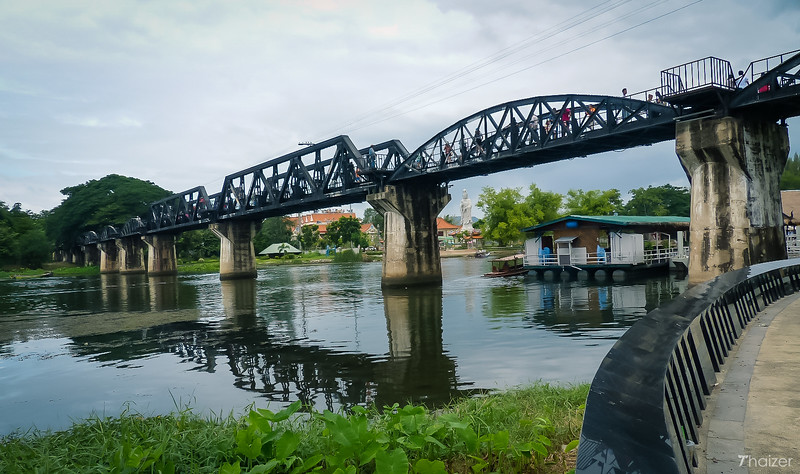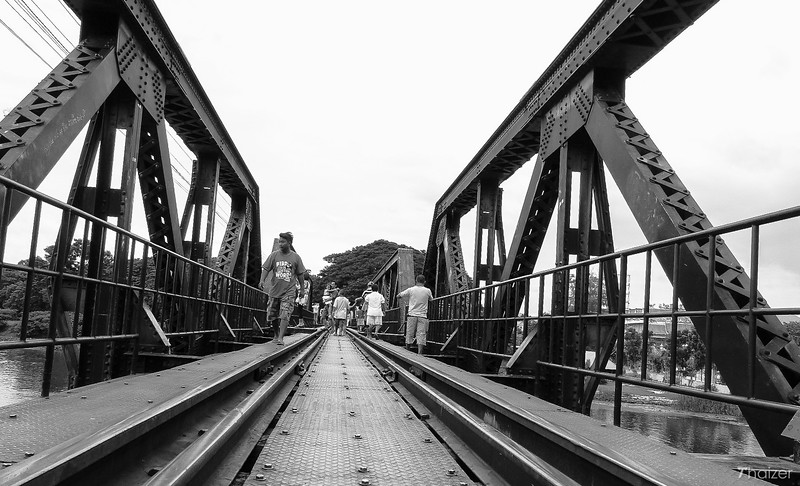One of the main tourist attractions in Kanchanaburi is the Bridge on the River Kwai made famous by the multi-Oscar-winning film of the same name from 1957. Tourists from all over the world come here to photograph the bridge and walk across it. However, if you have time and you appreciate history, I would recommend taking a journey across the bridge by train to the end of the line at Nam Tok and back again. This gives you some wonderful views of the surrounding countryside, but more importantly also helps you to appreciate to some extent the scale of the task that went into the construction of the infamous Thailand to Burma railway which was to become known as the Death Railway.

During their occupation of Thailand (then called Siam) during World War II, the Japanese began construction of a railway that was to link Thailand with Burma. This would enable the Japanese to supply their army in Burma via a safe land route rather than via sea. Approximately 16,000 Allied prisoners of war (POWs) died during the construction of the line and a number of the fallen are buried at Kanchanaburi War Cemetery. In addition to the POWs, the Japanese army used forced civilian labour from countries including Thailand, Burma, India, China, Indonesia, and Malaysia. It is estimated that up to 100,000 of these forced labourers died during the construction of the Siam (Thailand) to Burma railway.
David Lean’s classic movie, filmed largely in Sri Lanka, did loosely base some characters on real-life people involved in the Death Railway, but ultimately the movie is a fictional work and so it is no surprise that there are historical inaccuracies. Some of these inaccuracies provided the Thai authorities with an unexpected problem when tourists started to arrive looking for the ‘real Bridge on the River Kwai’, because the river where the bridge was located wasn’t actually called ‘Kwai’.

Approximately 5 kilometres north of Kanchanaburi there were two bridges that were built by POWs during the war. A temporary wooden bridge was completed at the beginning of 1943 and a few months later the steel bridge (which can be seen today) was finished. The curved steel bridge spans that can be seen today are the original spans that the Japanese transported from Java. The other spans with straight-lines were installed after the war to replace those that had been damaged by Allied bombing.
The name of the river on which the bridge stands was originally called the Mae Khlong River which sits in the Khwae Valley. The valley itself was named after the two tributary rivers (Khwae Yai and Khwae Noi) that fed into the Mae Khlong. Following the success of the film and the arrival of tourists, Thai authorities in the 1960s renamed the stretch of river where the bridge stands to ‘Khwae’. In Thai, the word ‘khwae’ translates as ‘tributary’ with the pronunciation sounding like kh-wair without the ‘r’ at the end. Because of the different ways the Thai language is transliterated, kwai became used in some translations and it is this version which has stuck as a direct consequence of the film.
Check rates for Kanchanaburi accommodation »